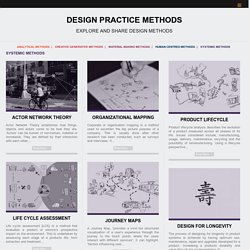

Never Miss A Word. Literature review RER. The use of semi-structured interviews in qualitative research: strengths and weaknesses. Untitled. M e tool series indepth interviews.pdf;jsessionid D2008D566DB63BCB243D6BBC6B18C5C5. Interviews. For Interviews with Individuals see: For Interviews with Groups see: Focus Group Discussions Types of interviews There are many different types of interview approaches and techniques, Generally speaking, all interviews fall into one of three categories: structured, semi-structured, and depth/unstructured interviews.

Structured interviews are most typically used in quantitative investigations, including survey research. In practice, these three approaches are routinely combined. A large number of more specific interviewing techniques fall under this broad taxonomy; including telephone interviews, computer-assisted interviewing, elite interviewing, life histories, household surveys and Key Informant Interviews which are interviews with people who have particularly informed perspectives on the project. Whatever approach the investigator selects, the interviewing processes itself follows several general stages: (WHO 2002 p.31) Advice Advice for CHOOSING this option (tips and traps) On interviewing: RMIT Central Authentication Service. Think you have empathy? — Brand & Marketing.
Empathy.

You will frequently hear the call for it in and around Silicon Valley/San Francisco. The idea is that if you have empathy toward your end consumers, you will create a product, service, app, etc. that really resonates with them. By definition, empathy means that you understand and share another person’s experiences and emotions. Yet, oddly enough, some companies use distancing language that puts a separation between themselves and others, and runs counter to their concept.
Thoughts become words, words become deeds, and so on. User Startups call the people who make it possible for them to have a company, career, and job “users.” Why not take the chance to reinforce empathy, especially internally? Product This example seems to be prevalent among farmers, chefs, small businesses, and even artists. Yes and no. But by saying “product” to your target audience, you’re basically minimizing or negating the differentiation that you have as a smaller producer. How to use empathy in design without killing millions of women — Fluxx Studio Notes. From an evolutionary viewpoint empathy may have developed to help predators.

A cheetah that can accurately predict the movement and actions of an impala is much more likely to eat. In short, empathy is a predatory tool. When we understand and can predict the action of another we can use that to our advantage. This type of empathy is often called cognitive empathy and it is about understanding the ‘world view’ of someone else. But cognitive empathy is only one of two separate and distinct elements that make up empathy. Generally, understanding of someone’s worldview is twinned with the ability to feel their emotions.
People who can understand the world view of another with no emotional connection are psychopaths. Torches of freedom In design this distinction matters. In 1929 Edward Bernays paid women to march in the Easter Sunday Parade whilst smoking. Bernays knew the women he was appealing to. Design Practice MethodsSYSTEMIC METHODS Archives - Design Practice Methods. Actor Network Theory Actor Network Theory establishes how things, objects and actors come to be how they are.

‘Actors’ can be human or non-human, material or immaterial. They are defined by their interaction with each other.... Read More → Organizational Mapping Corporate or organisation mapping is a method used to ascertain the big picture purpose of a company. Read More → Product Lifecycle Product lifecycle analysis describes the evolution of a product measured across all phases of its life. Read More → Life cycle assessment Life cycle assessment [LCA] is a method that evaluates a product or service’s prospective impact on the environment.
Use our methods. DP0 (Design Project Zero) is a 90-minute (including debrief) fast-paced project though a full design cycle.

Students pair up to interview each other, create a point-of-view, ideate, and make a new solution that is “useful and meaningful” to their partner. Two versions of DP0 are “The Wallet Project” and “The Gift-Giving Project”. They have the similar format, only the topic is different. The original DP0 The Wallet Project was created for the d.school’s very first course in 2004 and the project starts with students looking at the content of their partner’s wallet or purse (and goes on to ask every student to design something for their partner). Another DP0 topic is The Gift-Giving Project where students are asked to redesign how their partner gives gifts.
Get the materials to facilitate the activity for a group yourself here. Or play the Crash Course (video facilitation that leads the group) here. David Gauntlett - Creative Explorations: New approaches to identities and audiences. Creative Explorations: New approaches to identities and audiences David Gauntlett Published by Routledge, 2007 How do you picture identity?

What happens when you ask individuals to make visual representations of their own identities, influences, and relationships? Drawing upon an array of disciplines from neuroscience to philosophy, and art to social theory, David Gauntlett explores the ways in which researchers can embrace people's everyday creativity in order to understand social experience. MakeTools. MakeTools.